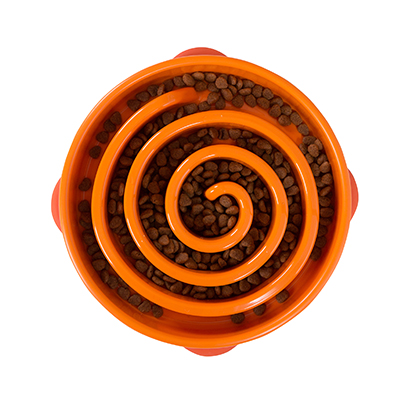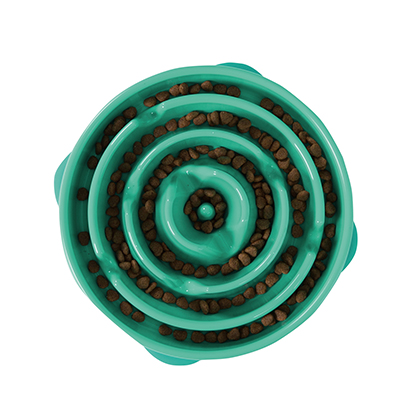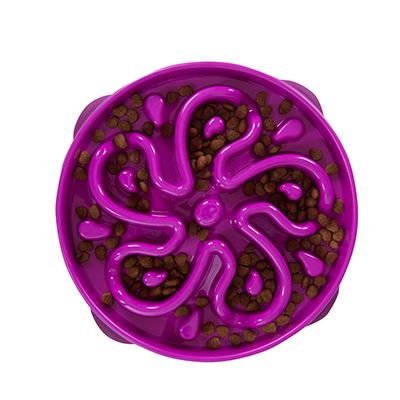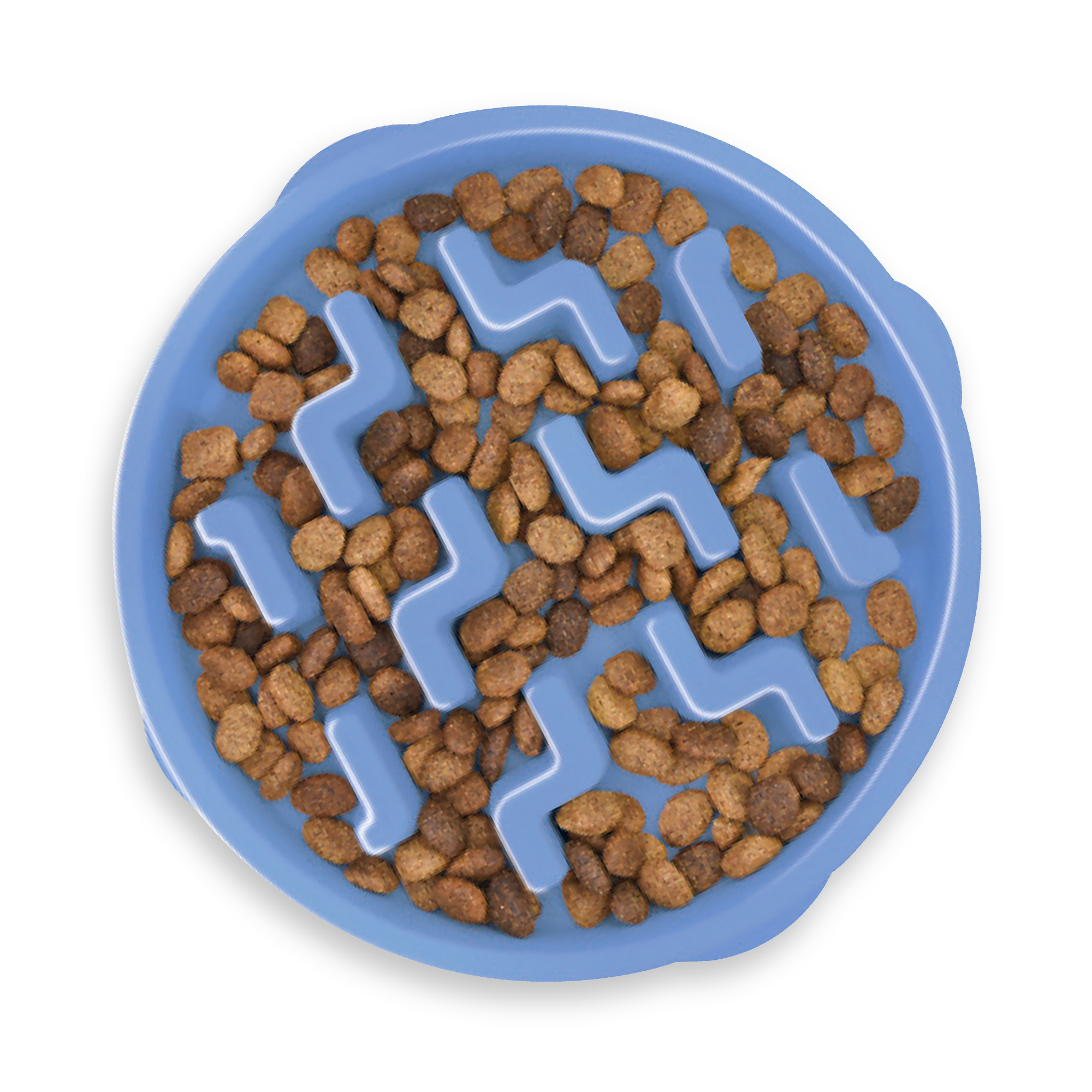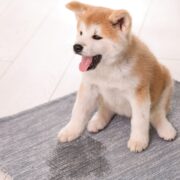How to Prevent Dog Bloat with a Dog Slow Feeder
As much as we love for our dogs to go fast, there are plenty of good reasons to help make their meals last. Rapid eating can be risky for our furry friends.
These days, most pet parents are aware of the health risks associated with rapid eating. Sadly, it’s all-to-common for dogs that eat too fast to end up at their veterinarian’s office. This is usually due to gastric dilatation-volvulus (GDV) — more commonly known as bloat.
It’s a lot more severe than typical indigestion. Bloat happens when speedy gulping and eating causes excessive amounts of fluid, food, and air to fill the dog’s stomach, which results in the stomach blowing up like a balloon.
Eventually, the stomach can become so distended that the stomach twists, trapping gas build up inside and cutting off blood flow to their organs. When this happens, a dog can quickly go into shock and die.
Symptoms of bloat include:
- pacing and restlessness
- pain in the abdomen area
- swollen stomach/abdominal wall
- drooling
- excessive panting
- exhaustion
Since this is such a scary and life-threatening condition, it’s important for dog owners to learn how to prevent dog bloat.
Risk Factors for GDV

A study found that deep-chested giant breed and large breed dogs like Akitas, Irish Setters, Irish Wolfhounds, St. Bernards, Boxers, Basset hounds, Great Danes German Shepherds, and Weimaraners are found to have a higher risk of bloat than small dogs with narrow chests.
Despite an increased awareness of the causes of this serious condition, bloat is still a relatively common occurrence. Even with emergency surgery, 25% – 40% of dogs do not survive GDV.
To lower the severity of bloating, many dog parents with large and giant breed dogs opt for gastropexy surgery. This is often done at the same appointment to spay or neuter the dog.
Another pet parent’s best bet to nip bloat in the bud is to take preventive measures when your dog eats. And that’s where Slow Feeding Dog Bowls come in (and your regular stainless steel dog bowl/cat bowl goes out).
Fast Eaters Need Dog Slow Feeders
One of the best preventative measures you can take to prevent dog bloat is to give dog food in a slow feeder dog bowl at mealtimes.
Fast-eating pups that gobble up their meals in one breath are at high risk for bloat and other digestive issues. A slow feeder with a non-slip base can prevent that.
Instead of feeding your pooch large meals at once, the Veterinary Medical Center of Central New York recommends feeding smaller meals more frequently to decrease your dog’s risk. You can also do this using a dog puzzle.
Fun Feeder food bowls are a great solution for dogs that consume their kibble too quickly. These bowls help to slow down chow times to help canines eat at a healthier pace. They slow down your dog’s eating time by as much as 10x!
They also feature non-slip, skid-resistant silicone rubber molding (phthalate, PVC, and BPA free!) to prevent dry food spillage and sliding (which comes in handy if you keep it near the water bowl).
With four unique designs and eight color options, you can choose the best slow feeder dog dish that your dog will dig, and a color that fits with your “digs.”
Best of all, they’re super easy to clean and top-rack dishwasher safe. There’s a large size for large dog breeds and even a mini size for cats and toy breeds. All of our anti-gulping slow feeders are made of food-safe materials and can hold both dry food and wet food.
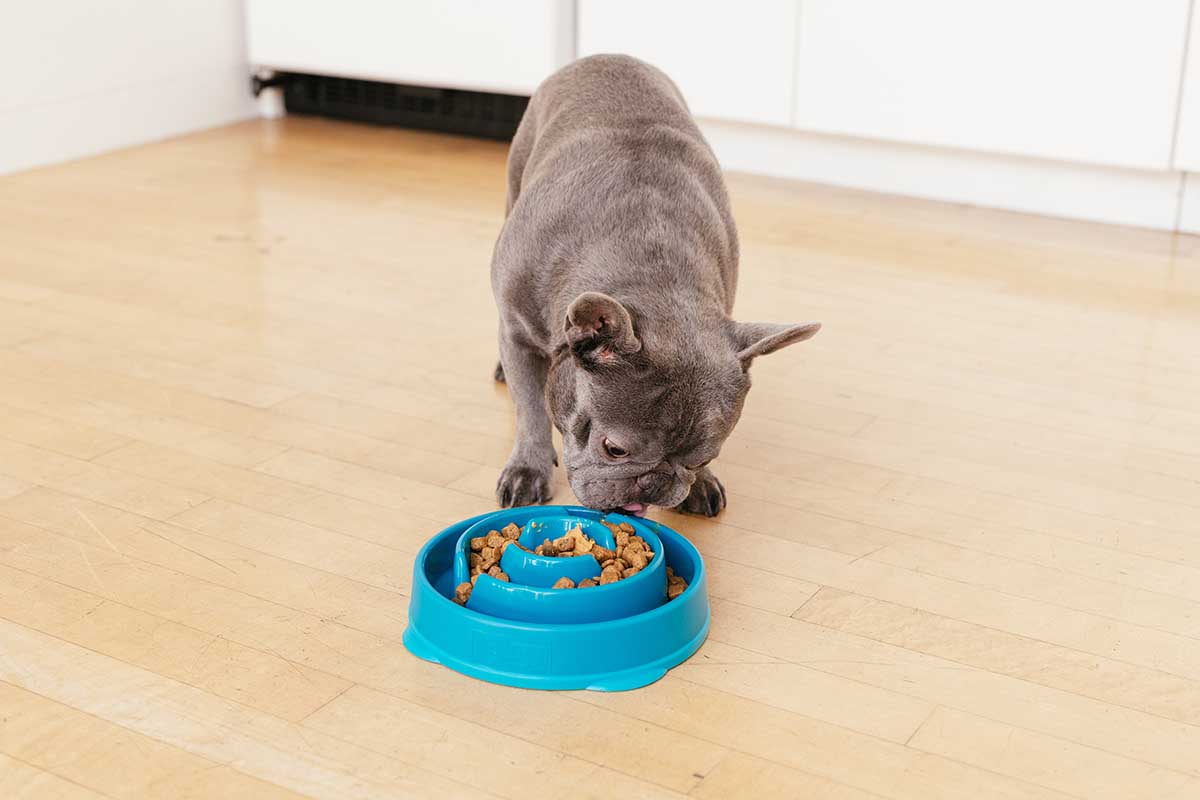
Dog Slow Feeder Becker’s Best Award Winner
At the 2014 Global Pet Expo, when our plastic bowl slow feeders debuted, they were recognized by Veterinarian Dr. Marty Becker as one of the ten best new pet products of the year!
Dr. Becker stated:
Dogs who wolf down their food or cats who ‘binge and purge’ have more than met their match with Outward Hound Fun Feeder Slo-Bowls that turn a pig-out session into a relaxing — and safer — meal.
It can’t hurt to consider a dog food bowl that was created with your pet’s safety in mind.
How are Slow Feeder Dog Bowls Safer?
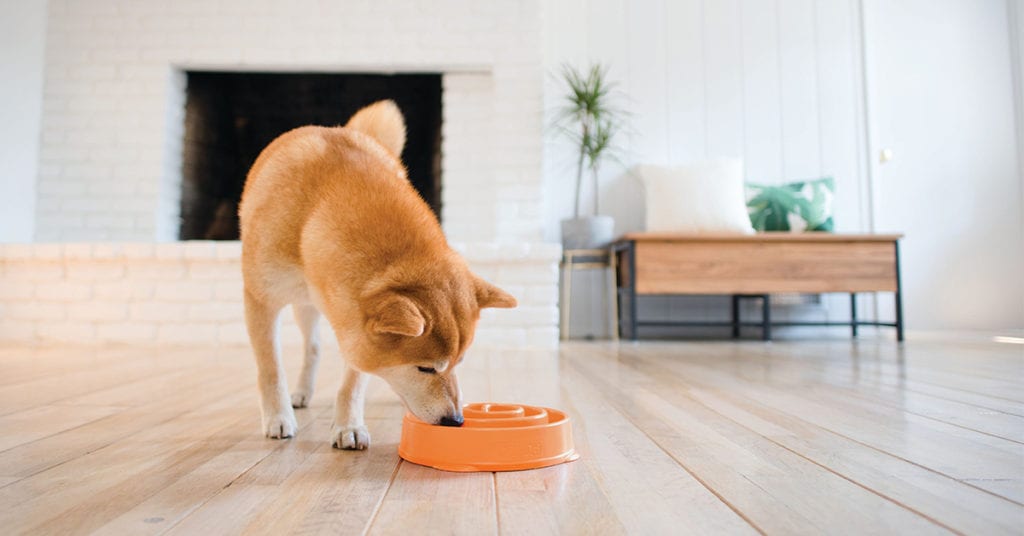
Eating natural food, unfortunately, does not mean that food is eaten naturally. We have to remind ourselves that our furry friends once had to fend for themselves in the wild, and a daily meal was not a guarantee. Their eating habits had to accommodate that, and they have evolved with tummy’s that do best when they take in small amounts of food at a time.
For centuries, this was the natural way for a dog to eat. Today, things are different for house-bound dogs we love to smother in affection. Large amounts of available food have caused a number of health and digestive issues.
Unlike regular bowls, slow feeder pet bowls require your dog to scavenge, hunt, and extract their feast, allowing dogs to eat food the way nature intended.
Slow eating is safer eating.
By prolonging feeding times, fun feeders allow dogs to eat the healthy way while reducing the risk for getting bloat, regurgitation, and canine obesity. When it’s time to dine, feed your dog with peace of mind.
We all want our dogs to be able to live life as fast as they want to—but we also want them as healthy as possible. By playing with their food, dogs eat a natural, healthy, and fun meal. Do your best to prevent dog bloat in order for your furry friends to stay healthy and happy for years to come.
Fun Feeder Slo Bowl, Slow Feeder Dog Bowl
$0.00 $0.00
Why do dogs feel like eating is a race? We’re not sure, but we solved the problem anyway. With meal-lengthening ridges, deep grooves, and challenging mazes, Outward Hound Fun Feeder Slo Bowls keep pups engaged for up to 10x longer at chow time. By creating a fun, healthy eating pace, our slow feeders help reduce obesity and bloat and improve your dog’s digestion for happier, healthier pups…
You can find our best dog toys, anti-slip slow feeders, and more on our website, Amazon, Chewy, and more. Adjustable elevated feeders coming soon!
Editors Note: This post was originally published in October 2013. It has been updated for accuracy and comprehensiveness.
